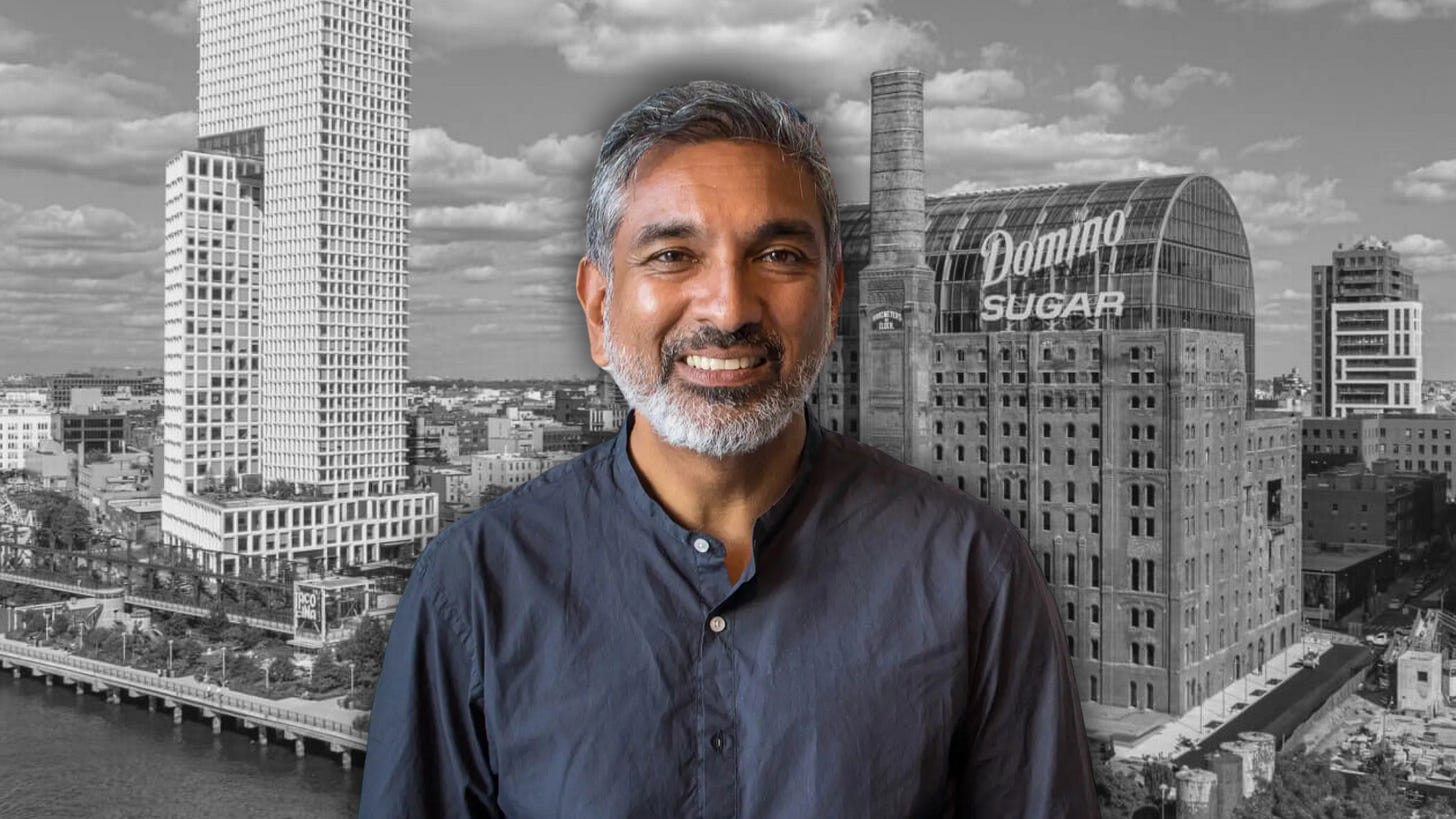Building Bridges
Architecture can unite our fragmented world and help heal the planet
Architect Vishaan Chakrabarti argues that thoughtful architecture can help bridge societal divisions, combat climate change, and build inclusive, sustainable communities. By emphasizing "urbanity"—spaces that foster connectivity, diversity, and shared human experiences—Chakrabarti shows how innovative design can reshape cities, reduce isolation, and address the intertwined crises of affordability, environmental impact, and social fragmentation.
AUSTIN, TEXAS—Can architecture help bridge our fragmented society, combat climate change, and create inclusive communities? Architect Vishaan Chakrabarti emphatically argues that it can.
Speaking on Saturday at SXSW, Chakrabarti, founder of the architecture firm Practice for Architecture and Urbanism (PAU), underscored the transformative power of thoughtful design, particularly at a moment of acute global challenges—from political polarization and the affordability crisis to climate disruption and rapid technological change.
Chakrabarti began by outlining the current state of global affairs, acknowledging the daunting pressures societies face today. Political divisions, exacerbated by stark inequalities in housing affordability, have become pervasive issues worldwide. Chakrabarti highlighted an alarming statistic: the salary required to own the same home today in the U.S. has nearly doubled in just the last five years, contributing significantly to societal tensions and fragmentation.
He noted how interconnected these challenges are, emphasizing how architecture and urban planning are at the crossroads of these crises. Chakrabarti pointed out that more than half the world’s population already lives in cities and suburbs, with projections from the United Nations estimating an increase from today’s 8.4 billion people to over 10 billion by the end of the century. While developed nations face declining populations, regions in Africa and Asia outside China and India are rapidly growing, which has fueled anxieties about resource scarcity and environmental strain.
However, Chakrabarti encouraged a reframing of the issue: "It’s not how many people, but how we live," he stressed, citing economist Kate Raworth’s concept of “doughnut economics,” a model advocating sustainable living within planetary boundaries. Chakrabarti pointedly highlighted a common misconception: the regions seeing the highest population growth, particularly in Africa, contribute the least to global carbon emissions, while the developed world remains the major driver of climate change through patterns of suburban sprawl and unsustainable living.
Return to Urbanity
As an architect deeply involved in global projects, Chakrabarti sees the design of suburban sprawl—dominant in places like the U.S.—as inherently unsustainable, both environmentally and socially. He argues that single-family homes represent poor thermal envelopes that amplify carbon footprints, increase automobile dependency, and significantly contribute to environmental degradation. They also encourage social isolation.
But if sprawling suburbs and anonymous high-rise cityscapes aren't the answer, what is?
Chakrabarti proposed a return to "urbanity"—a term he uses to encapsulate the social and ecological harmony achievable in communities of any scale, whether densely urban or rural. Rather than implying density alone, urbanity, he explained, encompasses diversity and interconnectedness, contrasting sharply with segregated or isolated environments.
To illustrate, Chakrabarti shared several compelling examples from his own practice. In Columbus, Indiana, he and his firm transformed a central intersection—once a mundane, overlooked space—into a vibrant, communal hub with a simple yet impactful canopy structure. This modest intervention transformed the town’s social dynamics, drawing together diverse groups who previously felt unwelcome downtown. "When people of difference meet eyeball to eyeball," Chakrabarti said, "the vitriol dissipates."
Similarly, another project in Indiana—designing a bridge emphasizing pedestrians and cyclists over vehicles—has physically and metaphorically connected underserved neighborhoods to the city's economic and social fabric. Likewise, his ongoing expansion of Cleveland’s Rock and Roll Hall of Fame aims not just to augment the iconic museum but to reintegrate it deeply with the city's life and identity. By creating an open, unticketed amphitheater, the project seeks to foster spontaneous human connections among diverse groups, strengthening social cohesion.
Historic Spaces, Modern Connections
Chakrabarti also highlighted his ambitious work on the adaptive reuse of a former Domino sugar refinery in Brooklyn, turning an abandoned industrial relic into a vibrant workplace and community space. By preserving the historic brick façade, Chakrabarti’s innovative approach integrates old and new, transforming the refinery into a "ship in a bottle," visually intriguing yet deeply functional and sustainable. The resulting space offers a unique, inviting environment that naturally promotes human interaction, thus addressing the post-pandemic challenges of bringing people back into shared workplaces.
Chakrabarti argues that this holistic vision of architecture extends beyond mere aesthetics. Citing spaces like New York's High Line, he demonstrated how thoughtful design can profoundly alter social dynamics, attract diverse populations, and foster shared belonging. The success of these projects challenges the skepticism Chakrabarti often encounters—that high-quality, community-centric design must inherently be costly. In reality, many successful projects worldwide employ modest budgets and prioritize human experience over extravagant aesthetics.
Chakrabarti’s message is clear and timely: to address the global crises of today and tomorrow, we must rethink how we build, emphasizing connectivity, sustainability, and joy. Architecture, he insists, has the potential not only to shape places but also to bridge divides, foster empathy, and bring diverse people together in shared, meaningful experiences.
Ultimately, he says, it is not merely about designing buildings but creating places of belonging—spaces where differences dissolve, and humanity can thrive.
Where’s your favorite neighborhood in the world? What about it inspires you? Please share in the comments below.
Do you have a lead for a story, want to share a project you’re working on, or just want to say hello? Please send me a message or leave a comment below.



